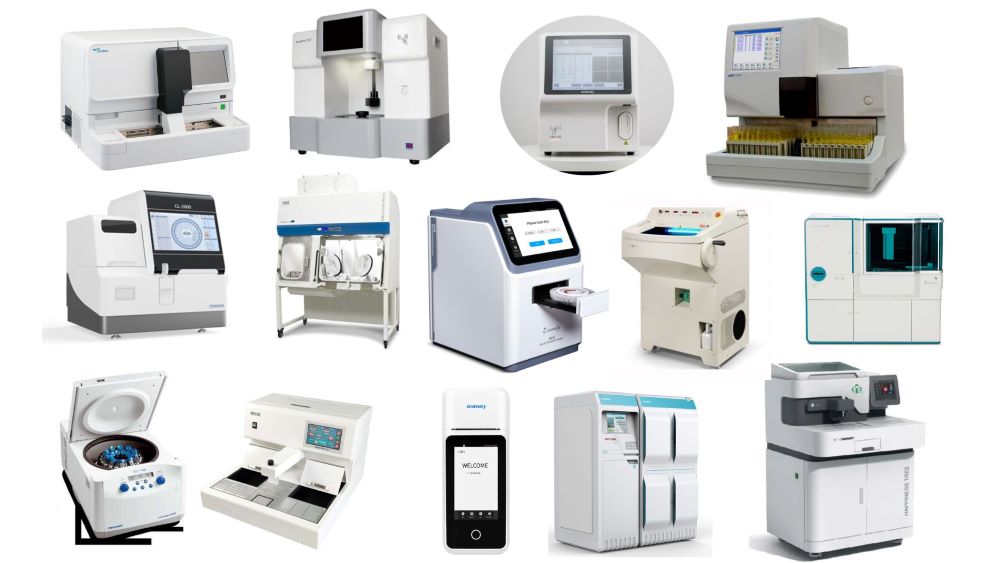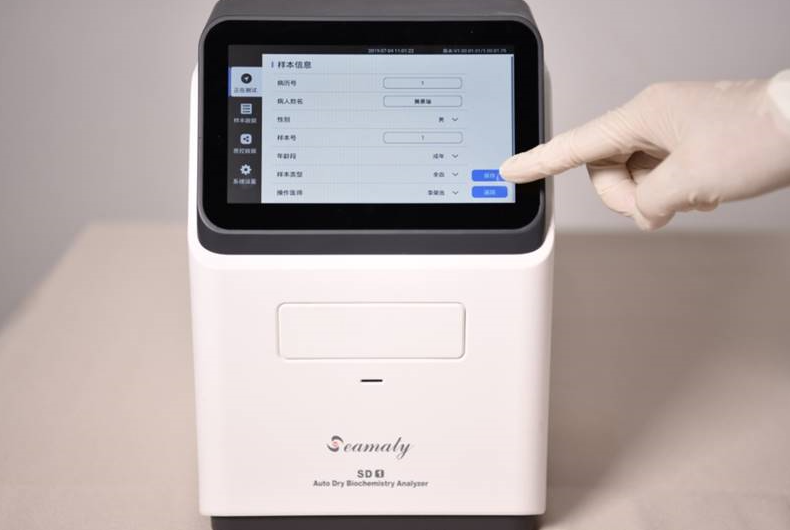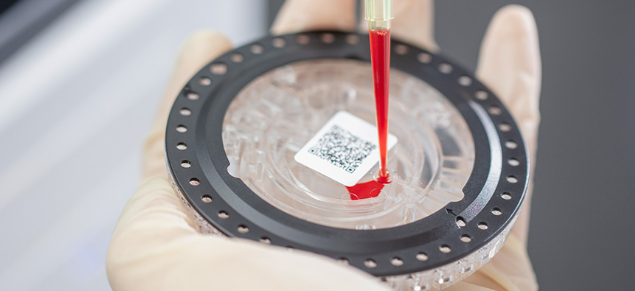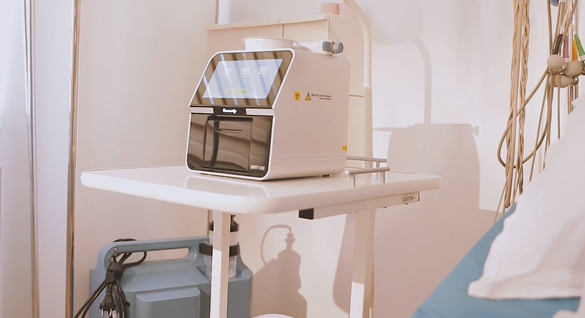release time:2024-08-07 16:03:36

This article delves into 14 essential laboratory equipment, offering a comprehensive overview of their names, working principles, and significance in various medical and research applications. By exploring brands of those equipment, we aim to provide a clear understanding of the leading options available to laboratories today, helping professionals make informed decisions about their equipment needs.
Introduction:Fully automated urine sediment analyzers use microscopic image recognition technology to automatically locate and capture formed elements in urine. They perform automatic identification and classification counting of these elements using morphological methods. These analyzers are primarily used in clinical labs and nephrology labs for routine urinalysis.
Brands: Sysmex (Japan), DS Medical (USA), Siemens (Germany), IRIS (USA), Dirui (China), Mindray (China)
· Capillary Viscometer (Pressure Sensor Type): Measures the viscosity of liquids based on the time required for them to flow through a standard capillary under the same conditions. Viscosity is proportional to the time required for the liquid to flow through a set distance.
· Cylindrical Viscometer (Suspension Type): Consists of two coaxial cylinders with a liquid to be tested placed in the gap. The inner cylinder is connected to a spring wire (suspension). Generally, the inner cylinder is fixed, and the outer cylinder rotates at a known angle. Viscosity is calculated from the torque applied to the liquid.
· Cone and Plate Viscometer: Composed of a circular flat plate and a coaxial cone. The liquid is placed between the cone and the plate. Generally, the plate is fixed, and the cone rotates at a known angle. Viscosity is calculated from the torque applied to the cone.
|
Laboratory Equipment |
Function/Principle |
Significance |
Leading Brands |
|
Biochemistry Analyzer |
Utilizes spectroscopic technology with colorimetry and indirect methods. |
Diagnoses and assesses health status by analyzing biochemical substances. |
Hitachi, Sysmex, Siemens, Beckman Coulter, Roche, Abbott, Toshiba, Seamaty |
|
Hematology Analyzer |
Impedance method detects changes in resistance as blood cells pass through an electrolyte solution. |
Enhances accuracy and provides data for diagnosing and differentiating diseases. |
Beckman Coulter, Abbott, Horiba ABX, Sysmex, Nihon Kohden, Siemens, Radiometer, Seamaty |
|
Blood Gas Analyzer |
Measures gases like oxygen and carbon dioxide, and pH levels. |
Provides rapid results crucial for critically ill patients. |
Radiometer, Roche, Siemens, GEM, Abbott, Seamaty |
|
Chemiluminescence Immunoassay Analyzer |
Uses chemiluminescent substances to label antigens or antibodies, measuring emitted light. |
Detects the presence of specific substances in immunoassays. |
Roche, Siemens, Abbott, Beckman Coulter, Tosoh, Snibe |
|
Urine Sediment Analyzer |
Uses image recognition technology for automatic analysis of urine sediments. |
Used in clinical and nephrology labs for routine urinalysis. |
Sysmex, DS Medical, Siemens, IRIS, Dirui, Mindray |
|
Coagulation Analyzer |
Examines thrombosis and hemostasis by measuring molecular markers. |
Diagnoses cardiovascular, cerebrovascular, and other diseases related to thrombosis and hemostasis. |
Sysmex, Medtronic, Stago, Beckman Coulter, bioMérieux, Huanfan |
|
Fully Automatic Hemorheology Analyzer |
Measures viscosity using capillary, cylindrical, and cone and plate viscometers. |
Analyzes blood flow properties, important for various clinical diagnostics. |
Beckman Coulter, Sysmex Europe |
|
Fully Automatic Bacterial Culture Analyzer |
Rapidly detects pathogenic microorganisms in blood and sterile body parts. |
Aids in rapid and effective clinical anti-infection treatment. |
Thermo Fisher, BD, bioMérieux |
|
Microbial Identification and Antibiotic Susceptibility Analyzer |
Combines fluorescence enhancement with biochemical reactions for microbial identification and susceptibility testing. |
Provides quick and accurate identification of microorganisms and their antibiotic susceptibility. |
bioMérieux, BD, Thermo Fisher, Siemens |
|
Cryostat |
Provides rapid pathological diagnosis of fresh tissue during surgery. |
Assists in determining the nature of lesions and surgical decisions. |
Leica, Medicon, Sakura, Shandon, Thermo Fisher |
|
Tissue Processor |
Automates dehydration and paraffin infiltration of tissues for pathological analysis. |
Prepares tissues for analysis in medical and research labs. |
Thermo Fisher, Leica, Sakura, Tosoh, Shandon, Medicon |
|
Embedding Center |
Embeds dehydrated and infiltrated tissues into wax blocks for histological diagnosis and research. |
Facilitates tissue analysis and research. |
Thermo Fisher, Leica, Sakura, Tosoh, Shandon, Medicon |
|
Centrifuge |
Uses centrifugal force to separate materials, including filtration and sedimentation types. |
Separates different materials, crucial for various laboratory processes. |
Thermo Fisher, Sigma, Eppendorf, Hitachi, Beckman Coulter |
|
Biological Safety Cabinet |
Protects operators and the environment from exposure to infectious aerosols and splashes. |
Ensures safety in laboratories when handling infectious materials. |
Thermo Fisher, Esco |
In summary, the 14 laboratory instruments discussed are crucial for advancing medical research and diagnostics. Understanding their principles, significance, and leading brands enables laboratories to make informed choices, enhancing their ability to meet the demands of modern healthcare. As technology evolves, these instruments will continue to play a vital role in improving patient care and scientific discovery.

2022-07-04
In a clinical laboratory, a chemistry analyzer is an instrument that is used to measure concentrations of various biomolecules in body fluids. The results of these measurements can provide important information about a patient's health.

2022-05-27
Point-of-care diagnostics allow patients to undergo medical testing in the field, significantly reducing diagnostic time and thus accelerating medical decisions. Microfluidic technology has played a very important role in the rapid development of POCT devices.

2021-10-21
Blood glucose meter testing is a simple, convenient and fast testing method. However, some people in the use of home blood glucose meter found with the hospital automatic biochemical instrument for the same conditions, the same patient blood glucose detection is different. So, when testing blood glucose, what is the difference between home blood glucose meter and hospital automatic biochemistry analyzer?